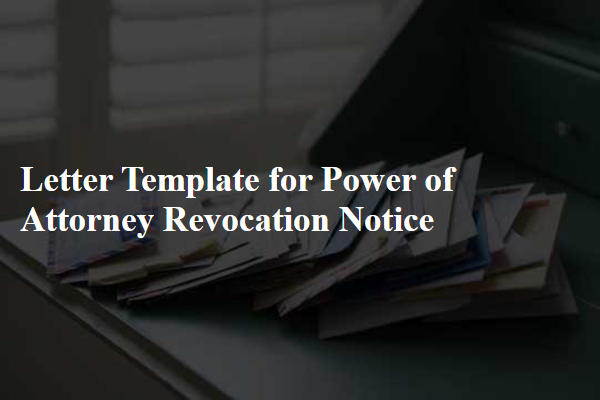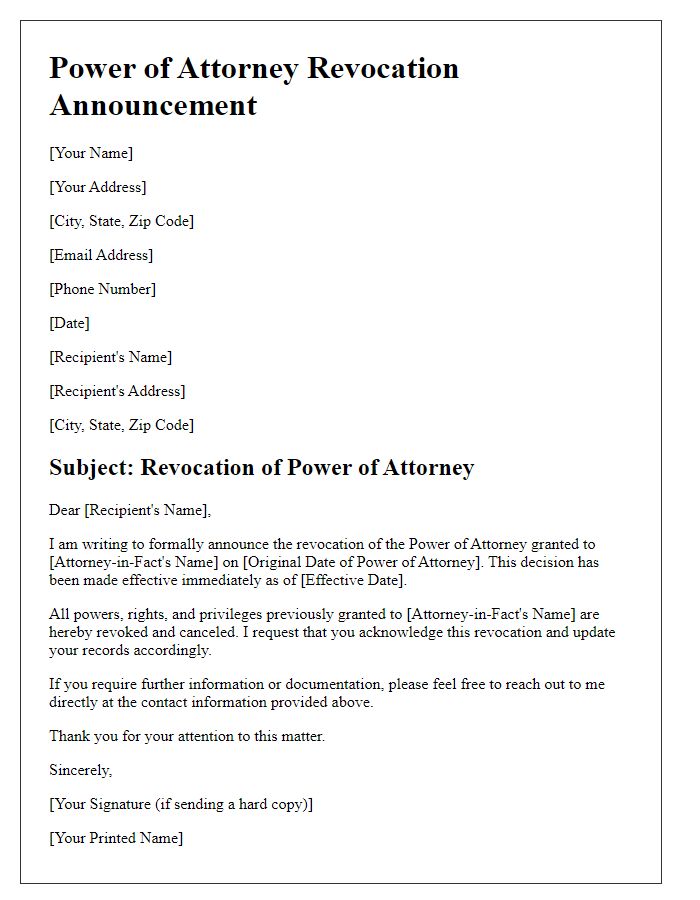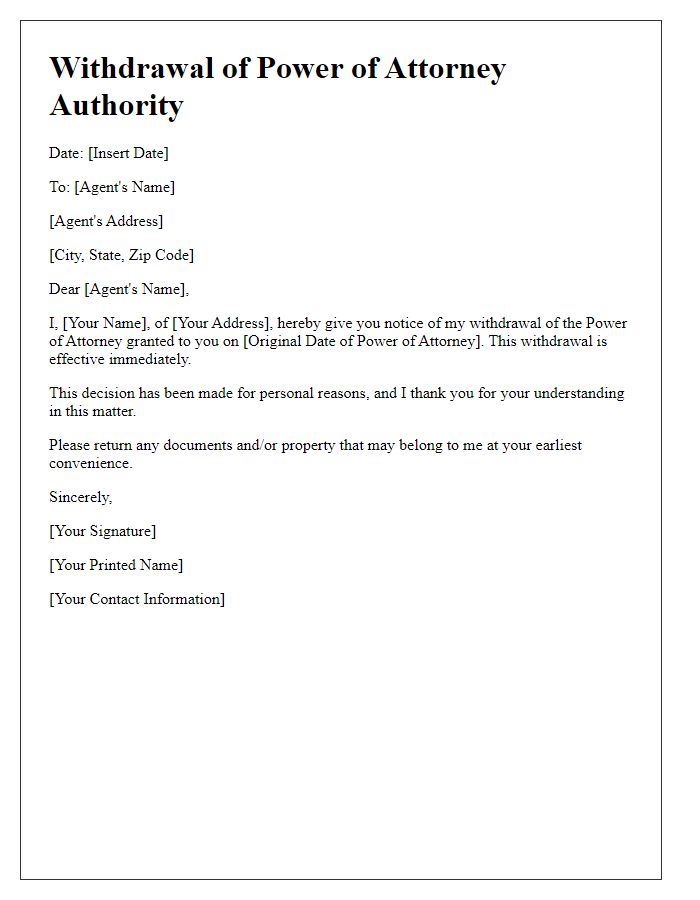Are you looking to revoke a power of attorney and want to ensure it's done correctly? Crafting a proper notice is essential for clarity and legal standing. In this article, we'll walk you through a simple yet effective letter template that can help you communicate your decision clearly and confidently. So, let's dive in and explore the details of this important process!

Principal's full name and contact information
Revoking a power of attorney can be a serious legal act that involves formally notifying all involved parties about the changes. An effective revocation notice typically includes the Principal's full name, contact information, and specific details regarding the original power of attorney, such as the date it was executed and the name of the Agent or Attorney-in-Fact. It is essential to clearly state the intent to revoke the power of attorney and to specify any instructions or timeline for the revocation to take effect. Additionally, notifying financial institutions, healthcare providers, and any involved third parties ensures that the revocation is acknowledged and respected, preventing any potential misuse of the previously granted authority. Proper documentation and legal advice may be necessary to ensure the revocation is valid and enforceable.
Agent's full name and contact information
A power of attorney revocation notice should include details such as the full name of the agent, their contact information, and a clear statement regarding the revocation of the previously granted authority. The agent, potentially someone trusted, can influence legal and financial decisions, making it crucial to communicate any changes promptly. Proper notification of revocation ensures that no misunderstandings arise regarding decision-making power. This process involves written documentation, specifying the effective date of revocation, ideally to be delivered through certified mail for record-keeping purposes. Ensure to withdraw any access rights to accounts or properties previously managed under the power of attorney to safeguard personal interests effectively.
Effective date of revocation
The revocation of a power of attorney (POA) notice serves as an official declaration, terminating the authority previously granted to an agent. This notice must specify the effective date of revocation, ensuring all parties are aware of the cessation of the agent's powers. Typically, a POA covers areas such as financial decisions, property management, or health care choices. A formal revocation notice ensures that any actions taken by the agent after the effective date will not hold legal validity. It is vital to deliver this notice to both the agent and any relevant institutions, such as banks or medical facilities, to prevent the former agent from exercising any authority thereafter. Legal guidelines often suggest including notarization for further validation.
Clear statement of intent to revoke power of attorney
A revocation of power of attorney is a formal process through which an individual, known as the principal, cancels the authority previously granted to an agent. This notice must clearly state the intent to revoke the power of attorney, specifying details such as the principal's full name, the name of the agent, and the effective date of the revocation. The document should also outline the reason for the revocation, whether it be changes in circumstances or loss of trust, to provide clarity. It is important to send this notice to all relevant parties, including financial institutions or healthcare providers, to ensure that the agent can no longer act on behalf of the principal. Legal advice may be beneficial to ensure compliance with state laws during this process.
Signatures of principal and notary public (if required)
When an individual wishes to revoke a power of attorney, it is essential to provide a clear and formal notice of revocation. This notice should contain the date of revocation, identification of the principal (the person revoking the power), and details about the specific power of attorney being revoked, including any relevant dates or names associated with the document. The notice should also contain the signatures of the principal, confirming the revocation. In some jurisdictions, a notary public may need to witness the signatures to ensure authenticity and legal validity, ensuring that the revocation holds up against potential disputes. The completed notice should be delivered to all relevant parties, including the agent named in the original power of attorney, to ensure that they are aware of the termination of their authority.













Comments